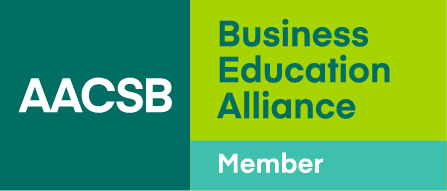An Innovative Singapore Engineering School Inspires Business Education Insights
“Suppose there never was a business school. How would you design one?” Professor Thomas Magnanti challenged the audience with this question at the end of his presentation at the annual meeting of INFORMS. Nearly a decade earlier, he led an effort by MIT to respond to a similar question posed by the Singapore government when it solicited applications to help build a new, innovative technical university. The result is Singapore University of Technology and Design (SUTD), and Magnanti is its founding president. He and his colleagues kindly agreed to have me and our Singapore-based AACSB staff over for a visit.
The whole campus was preparing for the Maker Faire Singapore—an event hosted in cities worldwide that showcases arts and crafts and science and engineering projects—when we arrived at SUTD, excited and anxious to learn. They were expecting more than 15,000 visitors to arrive the next day, and still our hosts patiently explained the school’s origins and approaches (such as organizational structure, approach to teaching and research, and collaborations), and gave us a special tour of campus. I was especially interested in their engineering curriculum innovations and highlight below several aspects that might be of particular interest to business educators. To learn more about SUTD, visit www.sutd.edu.sg.
Four Pillars
Like business schools, existing engineering schools are largely organized by disciplines. The emergence of engineering disciplines can be traced to major scientific breakthroughs. For example, MIT’s electrical, chemical, and nuclear engineering departments were created in 1902, 1920, and 1958, respectively. Curricula evolved accordingly, an artifact of history.
But as our hosts explained, the world does not really need “mechanical” engineers. It needs innovative products (vehicles, phones, medical devices, games), services (education, health care, finance), and systems (energy, transportation, manufacturing). Engineering education is about solutions to societal needs. And, while there is much more to the story, this step of elevating the meaning and purpose of engineering education was essential to achieving SUTD’s effort to blur the boundaries between disciplines and create a more integrated curriculum. Instead of discipline-specific majors, they built the curriculum on four pillars: Architecture and Sustainable Design, Engineering Product Development, Engineering Systems and Design, and Information Systems Technology and Design.
4D Design Experience
Another interesting aspect of the curriculum is the unique and prominent role that has been given to design. It is much more than an important subject to study; it is an approach that glues the curriculum together. Design is within subjects, across subjects, inside the projects driven by student initiatives, and it spans academic years. SUTD calls it the 4D Design Experience. Foundational courses for first-year students are presented as “Mathematics, Science, Introductory Humanities, Social Sciences in the context of Design,” and the senior capstone is described as an “integrated design experience” (emphasis added). Design projects are everywhere in between. Can you name another university with “design” in its name?
The Fifth Row
The standard university model is time-driven. In North America, for example, it takes place over four years, with two semesters per year and four to five courses per semester. About 40 hours is spent in class and with an expectation that another 80–120 hours is spent studying outside of class. SUTD did not (regrettably, according to Magnanti) deviate much from the standard semester calendar, but they did pause to ask, “How do we build in time and space for students to pursue their passions and for self-reflection?” Their response: students may not take more than four courses each semester, and each week at least two afternoons are set aside with no classes—time that is reserved for student-driven organizations and projects. They call it “the fifth row” because it is like the fifth class. In addition, January is reserved as an independent activities period for students to pursue their personal interests.
The school is also concerned about space and how it supports active learning inside and outside of the classroom. They have cohort-based, dedicated rooms. Students own the learning space 24/7; they can do with it what they want and the professors come to them. Active learning spaces are everywhere, including in the Fab Lab, where students can create prototypes of products.
Competition or Collaboration?
Perhaps by you are beginning to wonder whether SUTD itself, though it is an engineering school, could also be a reasonable response to Magnanti’s opening question about how you would design a business school. Because they recognize that business and management skills are necessary if their graduates are going to change the world, they include courses like financial decision-making, operations management, and organizations and people in the program. The Engineering Systems and Design pillar includes focus tracks on data analytics, financial services, and supply chains and logistics. Entrepreneurship is a common thread in the curriculum, and by the time of our visit (four years after they opened), 11 startups had already come out of their programs. They don’t use the word “engineering” in their name, and their mission could be applied to modern business education: to “advance knowledge and nurture technically-grounded leaders and innovators to serve societal needs.”
The higher education competitive landscape is indeed changing, blurring the boundaries between engineering and business education. But SUTD does not seem to view business schools as competitors. Already it partners with Singapore Management University and Zhejiang University’s School of Economics and Management in Hangzhou, a Chinese city long known for its startups, including Alibaba. Nearly 30 years ago Magnanti co-founded the MIT Leaders for Global Operations (LGO) program, a partnership of MIT’s School of Engineering and its Sloan School of Management “to generate cutting-edge knowledge at the intersection of engineering and management, and to educate leaders to address the world’s most challenging operations and high-tech problems.” He believes entrepreneurship is the perfect area for collaboration with business schools.
Regardless of whether you view them as competitors or collaborators, it is increasingly clear that that business schools and engineering schools can learn a lot from each other about how to innovate in higher education. What about other disciplines? Stay tuned: in November I am scheduled to visit another “built from a blank slate” school, Dell Medical School, based in Austin, Texas.





